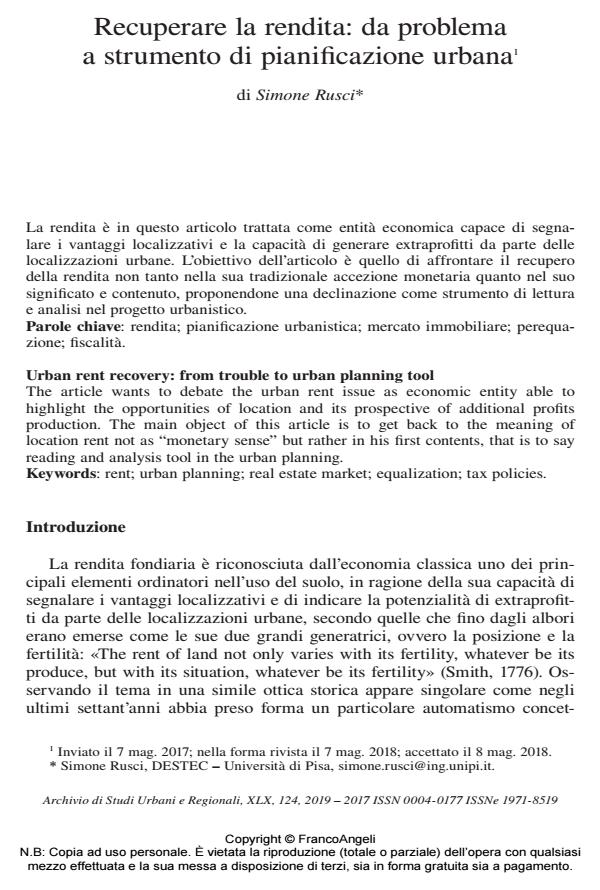Urban rent recovery: from trouble to urban planning tool
Journal title ARCHIVIO DI STUDI URBANI E REGIONALI
Author/s Simone Rusci
Publishing Year 2019 Issue 2019/124
Language Italian Pages 21 P. 49-69 File size 129 KB
DOI 10.3280/ASUR2019-124003
DOI is like a bar code for intellectual property: to have more infomation
click here
Below, you can see the article first page
If you want to buy this article in PDF format, you can do it, following the instructions to buy download credits

FrancoAngeli is member of Publishers International Linking Association, Inc (PILA), a not-for-profit association which run the CrossRef service enabling links to and from online scholarly content.
The article wants to debate the urban rent issue as economic entity able tohighlight the opportunities of location and its prospective of additional profitsproduction. The main object of this article is to get back to the meaning oflocation rent not as "monetary sense" but rather in his first contents, that is to sayreading and analysis tool in the urban planning.
Keywords: Rent; urban planning; real estate market; equalization; tax policies.
- Selected Articles from the International Conference on Designing in Disorder Laura Pogliani, Andrea Arcidiacono, Silvia Ronchi, Viviana di Martino, Francesca Mazza, pp.175 (ISBN:978-981-96-7873-0)
Simone Rusci, Recuperare la rendita: da problema a strumento di pianificazione urbana in "ARCHIVIO DI STUDI URBANI E REGIONALI" 124/2019, pp 49-69, DOI: 10.3280/ASUR2019-124003